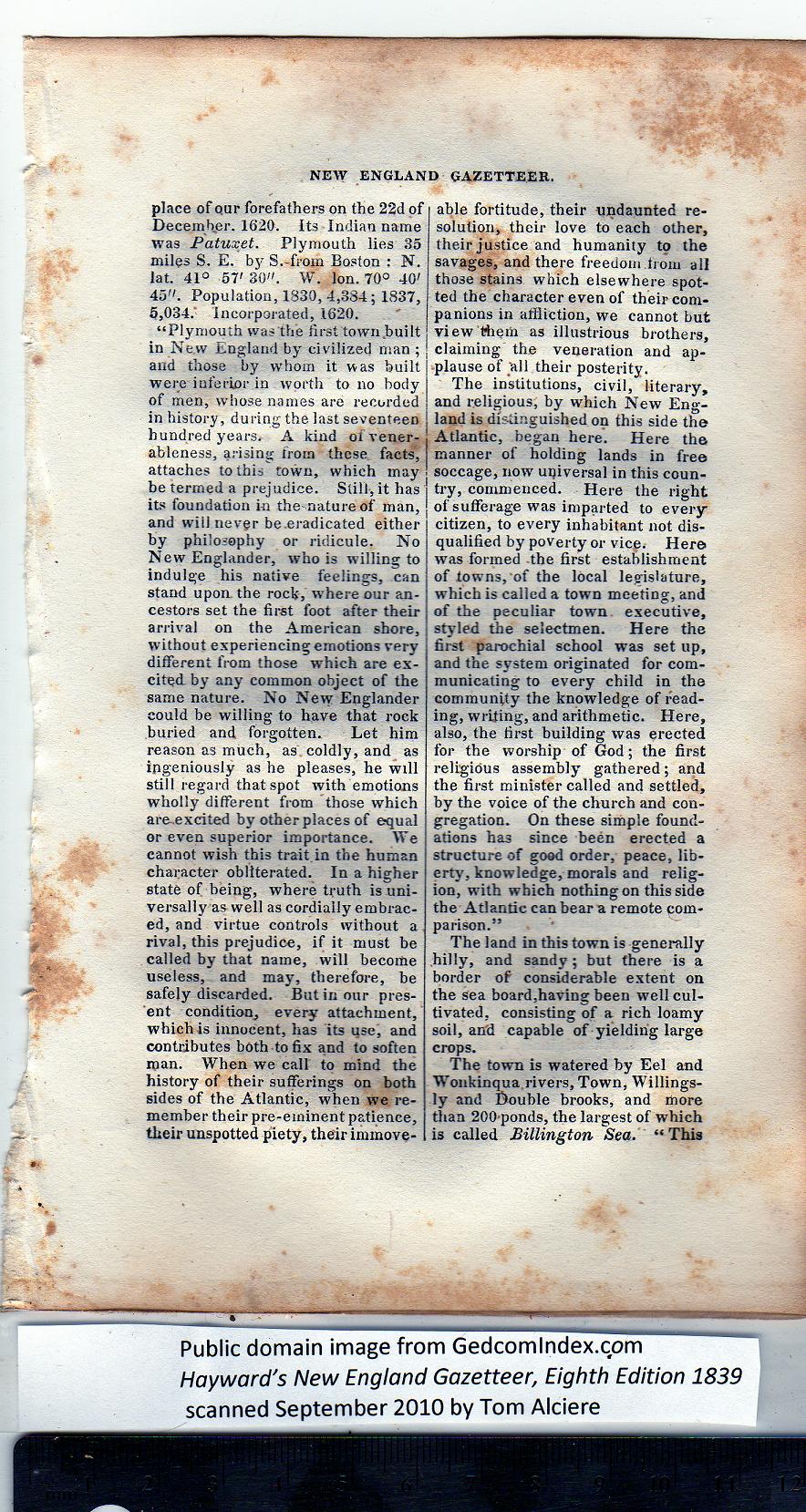|
place of our forefathers on the 22d of
December. 1620. Its Indian name
was Patuxet. Plymouth lies 35
miles S. E. by S.-from Boston : N.
lat. 41° 57' 30". W. Ion. 70° 40'
45". Population, 1830, 4,384; 1837,
5,034.‘ Incorporated, 1620.
“Plymouth was the first town .built
in New England by civilized man ;
and those by whom it was built
were inferior in worth to no body
of men, whose names are recorded
in history, during the last seventeen
hundred years. A kind oi vener-
ablcness, arising from these facts,
attaches to this town, which may
be termed a prejudice. Still, it has
its foundation in the-nature of man,
and will nevgr be.eradicated either
by philosophy or ridicule. No
New Englander, who is willing to
indulge his native feelings, can
stand upon the rock, where our an-
cestors set the first foot after their
arrival on the American shore,
without experiencing emotions very
different from those which are ex-
cited by any common object of the
same nature. No New Englander
could be willing to have that rock
buried and forgotten. Let him
reason as much, as. coldly, and as
ingeniously as he pleases, he will
still regard that spot with emotions
wholly different from those which
are.excited by otherplacesof equal
or even superior importance. We
cannot wish this trait in tbe human
character obliterated. In a higher
state of being, where truth is uni-
versally as well as cordially embrac-
ed, and virtue controls without a
rival, this prejudice, if it must be
called by that name, will become
useless, and may, therefore, be
safely discarded. Butin our pres-
ent condition, every attachment,
which is innocent, has its use, and
contributes both to fix and to soften
man. When we call to mind the
history of their sufferings on both
sides of the Atlantic, when we re-
member their pre-eminent patience,
their unspotted piety, their immove-
able fortitude, their undaunted re-
solution, their love to each other,
their justice and humanity to the
savages, and there freedom from all
those stains which elsewhere spot-
ted the character even of their com-
panions in affliction, we cannot but
view them as illustrious brothers,
claiming the veneration and ap-
plause of jail their posterity. |
The institutions, civil, literary,
and religious, by which New Eng-
land is distinguished on this side the
Atlantic, began here. Here the
manner of holding lands in free
soccage, now universal in this coun-
try, commenced. Here the right
of sufferage was imparted to every
citizen, to every inhabitant not dis-
qualified by poverty or vice. Here
was formed the first establishment
of towns, of the local legislature,
which is called a town meeting, and
of the peculiar town executive,
; styled the selectmen. Here the
first parochial school was set up,
and the system originated for com-
municating to every child in the
community the knowledge of read-
ing, writing, and arithmetic. Here,
also, the first building was erected
for the worship of God; the first
religious assembly gathered; and
the first miuister called and settled,
by the voice of the church and con-
gregation. On these simple found-
ations has since been erected a
structure of good order, peace, lib-
erty, knowledge, morals and relig-
ion, with which nothing on this side
the Atlantic can bear a remote com-
parison.”
The land in this town is generally
hilly, and sandy ; but there is a
border of considerable extent on
the sea board,having been well cul-
tivated, consisting of a rich loamy
soil, and capable of yielding large
crops.
The town is watered by Eel and
Wonkinqua rivers, Town, Willings-
ly and Double brooks, and more
than 200’ponds, the largest of which
is called Millington Sea. “This |
